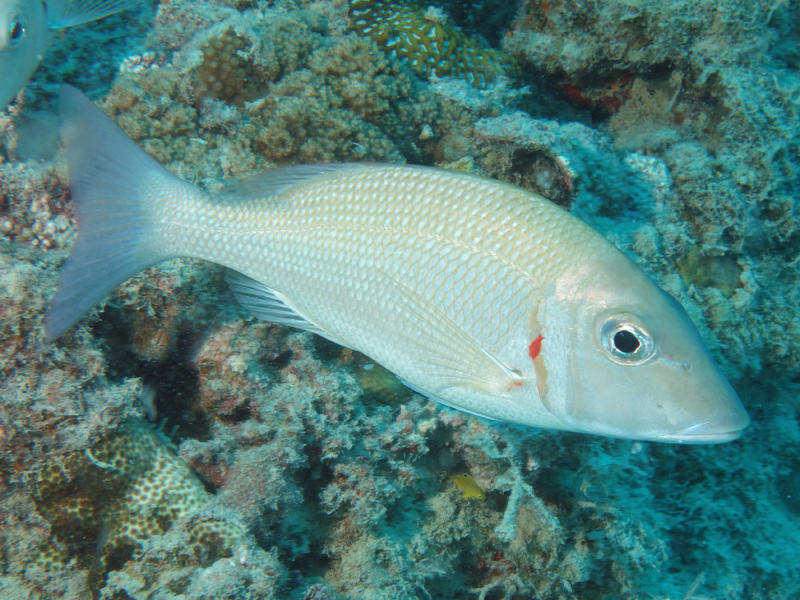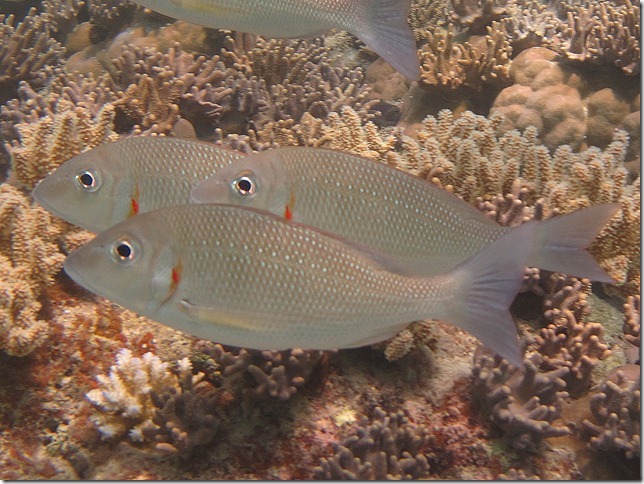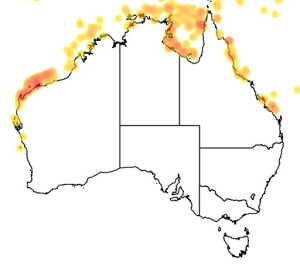�
�
�
���
Lethrinus lentjan
Redspot Emperor
Kingdom
Animalia
Phylum
Chordata
Class
Actinopterygii
Order
Perciformes
Family
Lethrinidae
Genus
Lethrinus
Species
Lethrinus lentjan
Colours
Distinguishing features
A medium sized silvery fish with a large eye and a small red spot on the operculum.
Size
- Up to 52 cm (Standard length)
Depth range
- Depth range data is not yet available.
Synonyms
Distribution
Distribution and habitat preferences
Usually in schools along the edges of patch reefs adjacent to sandy lagoonal areas.
Can be found in most locations around the island.
Behaviour
This species is an active noctural feeder, and hunts for crustaceans and other invertebrates over the sandy lagoon floor and nearby reefs. Juveniles and small adults tend to form schools in shallow water, whereas the larger adults are solitary and found in deeper water. The Emperors are protogynous hermaphrodites, starting life as females and then changing sex to male at a larger size. Maximum age for this species is reported to be 19 years.
Web resources
References
References that assist with identification
- Allen, G., R. Steene, P. Humann and N. Deloach (2003). Reef fish identification: Tropical Pacific New World Publications Inc., Jacksonville, FL, USA.
- Randall, J.E., G.R. Allen and R.C. Steene (1990). Fishes of the Great Barrier Reef and Coral Sea University of Hawaii Press, Honolulu, Hawaii.
Other references
- Arvedlund, M. and A. Takemura (2006). The importance of chemical environmental cues for juvenile Lethrinus nebulosus Forsskål (Lethrinidae, Teleostei) when settling into their first benthic habitat, Journal of Experimental Marine Biology and Ecology, 338: 112-122. LIRS catalog number 90061.
- View all references






